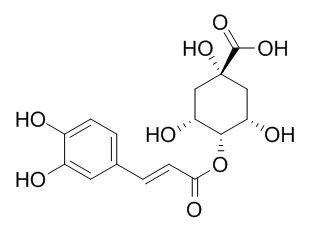Cyclohexanecarboxylic acid
Standard reference
Inquire / Order:
manager@chemfaces.com
Technical Inquiries:
service@chemfaces.com
Tel:
+86-27-84237783
Fax:
+86-27-84254680
Address:
1 Building, No. 83, CheCheng Rd., Wuhan Economic and Technological Development Zone, Wuhan, Hubei 430056, PRC
Providing storage is as stated on the product vial and the vial is kept tightly sealed, the product can be stored for up to
24 months(2-8C).
Wherever possible, you should prepare and use solutions on the same day. However, if you need to make up stock solutions in advance, we recommend that you store the solution as aliquots in tightly sealed vials at -20C. Generally, these will be useable for up to two weeks. Before use, and prior to opening the vial we recommend that you allow your product to equilibrate to room temperature for at least 1 hour.
Need more advice on solubility, usage and handling? Please email to: service@chemfaces.com
The packaging of the product may have turned upside down during transportation, resulting in the natural compounds adhering to the neck or cap of the vial. take the vial out of its packaging and gently shake to let the compounds fall to the bottom of the vial. for liquid products, centrifuge at 200-500 RPM to gather the liquid at the bottom of the vial. try to avoid loss or contamination during handling.
Plants (Basel).2023, 12(11):2107.
J Biomol Struct Dyn.2024, 1-12.
Allergol Immunopathol (Madr).2022, 1;50(4):23-30.
Mol Plant Pathol.2023, 24(2):123-141.
Molecules.2023, 28(16):6025.
Molecules.2021, 26(16):4722.
African J. Agricultural Research 2017, 12(13):1164-1168
BMC Plant Biol.2018, 18(1):122
J.Soc.Cosmet.Sci.Korea2024, 50(3): 261-270
J Ethnopharmacol.2023, 313:116534.
Related and Featured Products
Can J Microbiol. 1982 Dec;28(12):1324-9.
The metabolism of cyclohexanecarboxylic acid and 3-cyclohexenecarboxylic acid by Pseudomonas putida.[Pubmed:
7168830]
METHODS AND RESULTS:
A strain of Pseudomonas putida grew rapidly on Cyclohexanecarboxylic acid as a sole source of carbon. A CoA-mediated beta-oxidation pathway was induced for the metabolism of the compound. The organism could not utilize 3-cyclohexenecarboxylic acid as a sole source of carbon for growth, but cells grown on gluconate in the presence of 3-cyclohexenecarboxylic acid were induced to metabolize Cyclohexanecarboxylic acid, benzoic acid, and catechol.
CONCLUSIONS:
Evidence is presented that 3-cyclohexenecarboxylic acid was slowly metabolized by a beta-oxidation pathway and by a pathway involving benzoic acid as an intermediate. For this strain of Pseudomonas putida, 3-cyclohexenecarboxylic acid acts as an oxidizable, nongrowth substrate and induces the metabolism of Cyclohexanecarboxylic acid and benzoic acid.
Mol Cell Biochem. 1985 Jul;67(2):171-9.
The aromatization of cyclohexanecarboxylic acid to hippuric acid: substrate specificity and species differences.[Pubmed:
4047028]
METHODS AND RESULTS:
The ability to convert Cyclohexanecarboxylic acid to hippuric acid has been studied in liver from guinea pigs, rabbits, rats and mice using a gas chromatographic - mass spectrometric method employing selected ion monitoring. Guinea pig liver showed the highest activity, giving values double of those found in rabbit liver and five times those in rat liver. Only very weak activity was found in mouse liver. (Hydroxymethyl)cyclohexane, cyclohexanealdehyde and alpha-hydroxyethylcyclohexane, which are structurally related to Cyclohexanecarboxylic acid but lack the carboxyl group, were not aromatized by guinea pig liver mitochondria.
CONCLUSIONS:
This finding indicates that the carboxyl group is essential for aromatization. Absence of aromatization was also found with the homologs cyclohexaneacetic acid and cyclohexanepropionic acid and with the di-acids trans-1,2- and trans-1,4-cyclohexanedicarboxylic acid. The effect of a methyl group in Cyclohexanecarboxylic acid depended on its position. 2-Methyl-1-Cyclohexanecarboxylic acid was not aromatized, however the 3- and 4-methyl derivatives underwent aromatization and subsequent conjugation with glycine.
The rates of formation of m-methyl- and p-methylhippuric acid were 16% and 9%, respectively, of that found for hippuric acid from Cyclohexanecarboxylic acid (8.0 nmol/min/mg protein).



